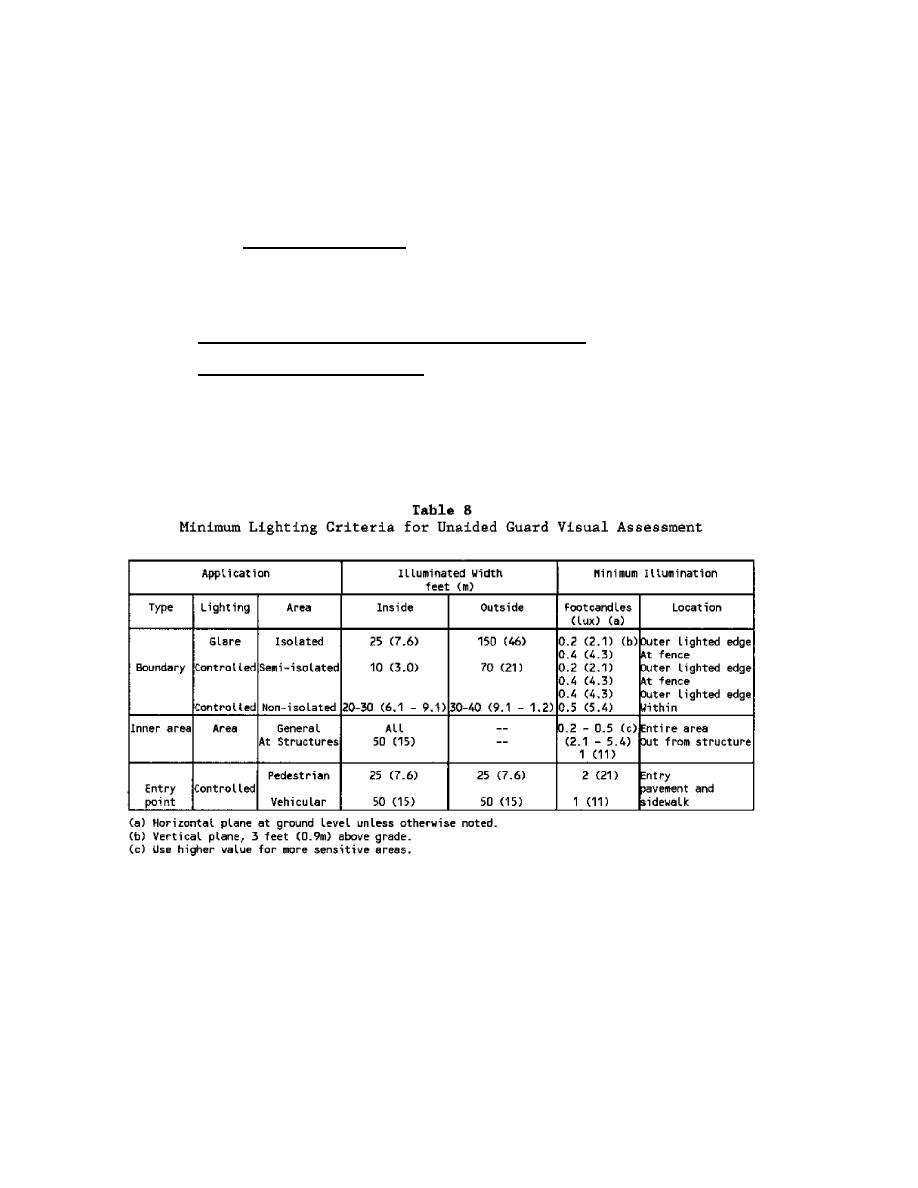

Custom Search
|
|

|
||
 MIL-HDBK-1013/1A
because of its appearance of activity.
Luminaires may be controlled
individually or as a group.
2)
On-Demand Lighting. Rather than randomly activating the
luminaires, an IDS sensor can be used to turn on the lights when an intruder
is detected. This type of active lighting system provides maximum deterrent
value at a low duty cycle. Such a responsive area system is subject to the
same nuisance and false alarms of any sensor system.
4.7.4
Minimum Lighting Illumination Specification
4.7.4.1
Guard Visual Surveillance. Table 8 shows minimum lighting
criteria. Lighting levels range from 0.2 footcandles (fc) [2.1 lux] near
boundaries and perimeter fencing, increasing to 2 fc (2.1 lux) at entry
areas. A lighting specification for visual guard surveillance to specific
locations is presented in Table 8. This table provides general guidance for
footcandles as a function of location type and for the amount of area that
should be illuminated.
4.7.4.2
Lighting for CCTV Surveillance. Lighting requirements for CCTV are
considerably higher than those required for direct visual surveillance. The
entire assessment zone must have an average initial horizontal illumination
level of 2 fc (21.5 lux) at 6 inches (150 mm) above the ground. The
uniformity of illumination in the assessment zone must meet the following
requirements: (1) the overall ratio of brightest to darkest regions of the
assessment zone must not exceed eight to one, and (2) the overall ratio of
the
89
|
 
|
|
 |
||